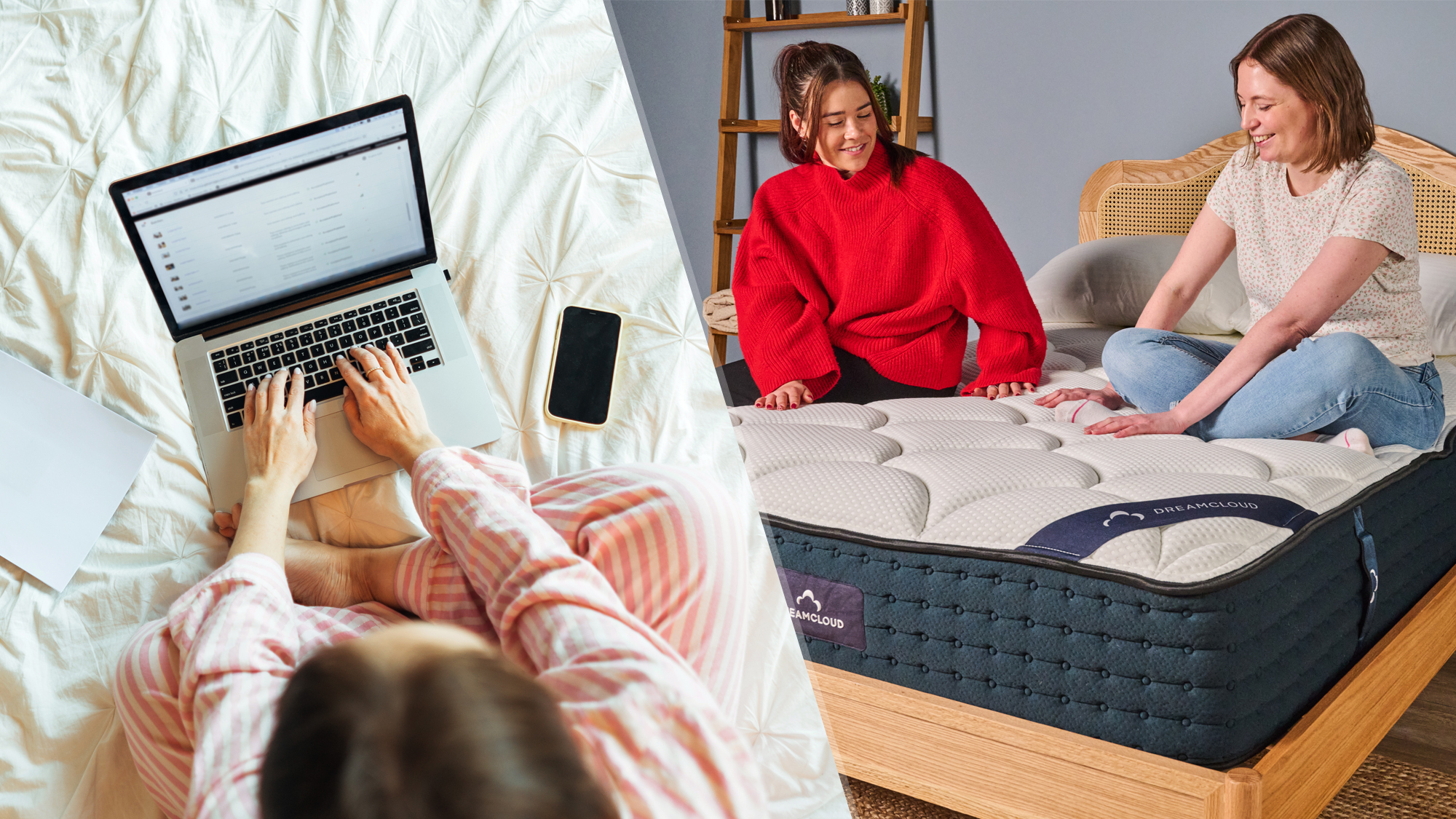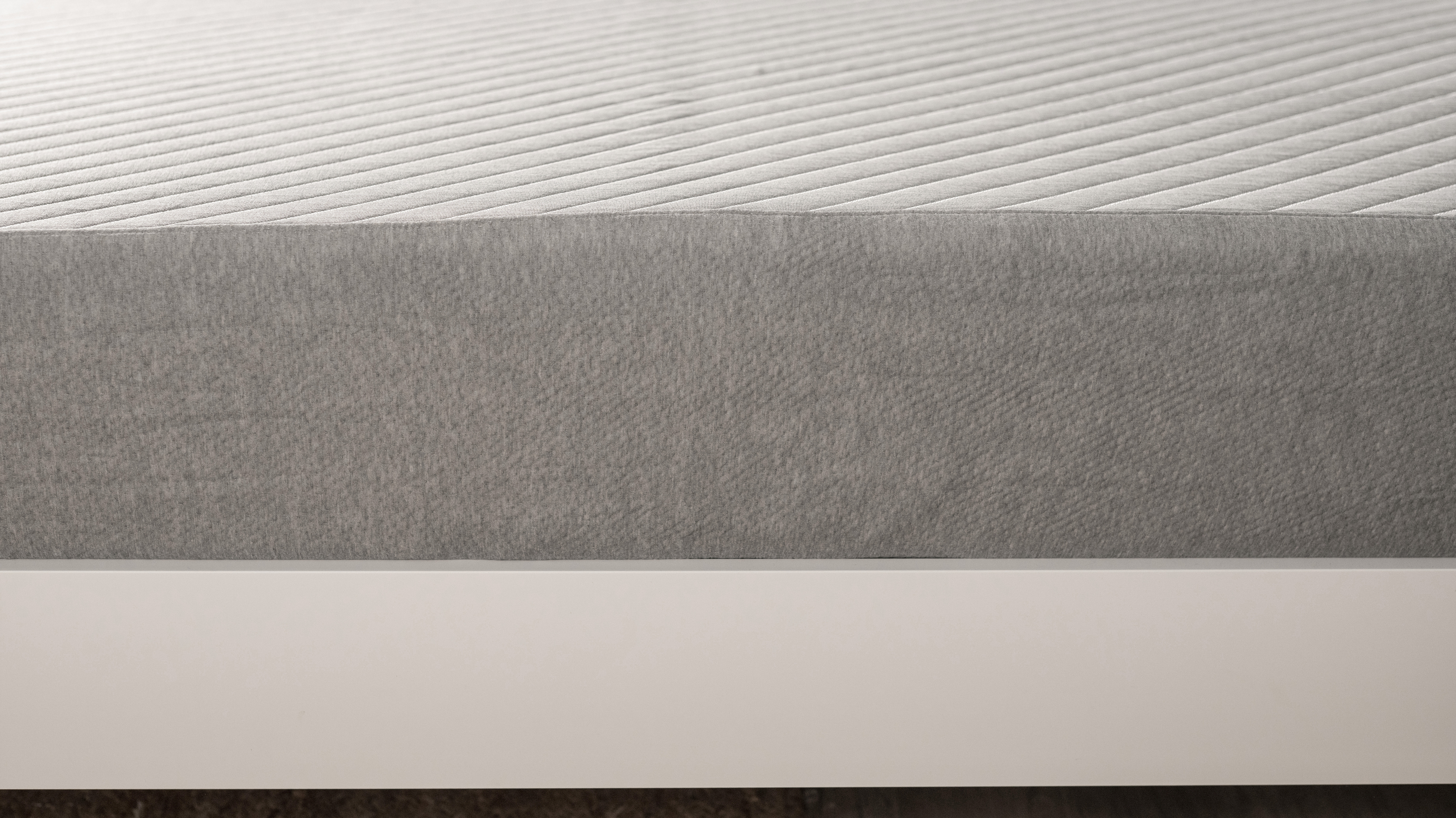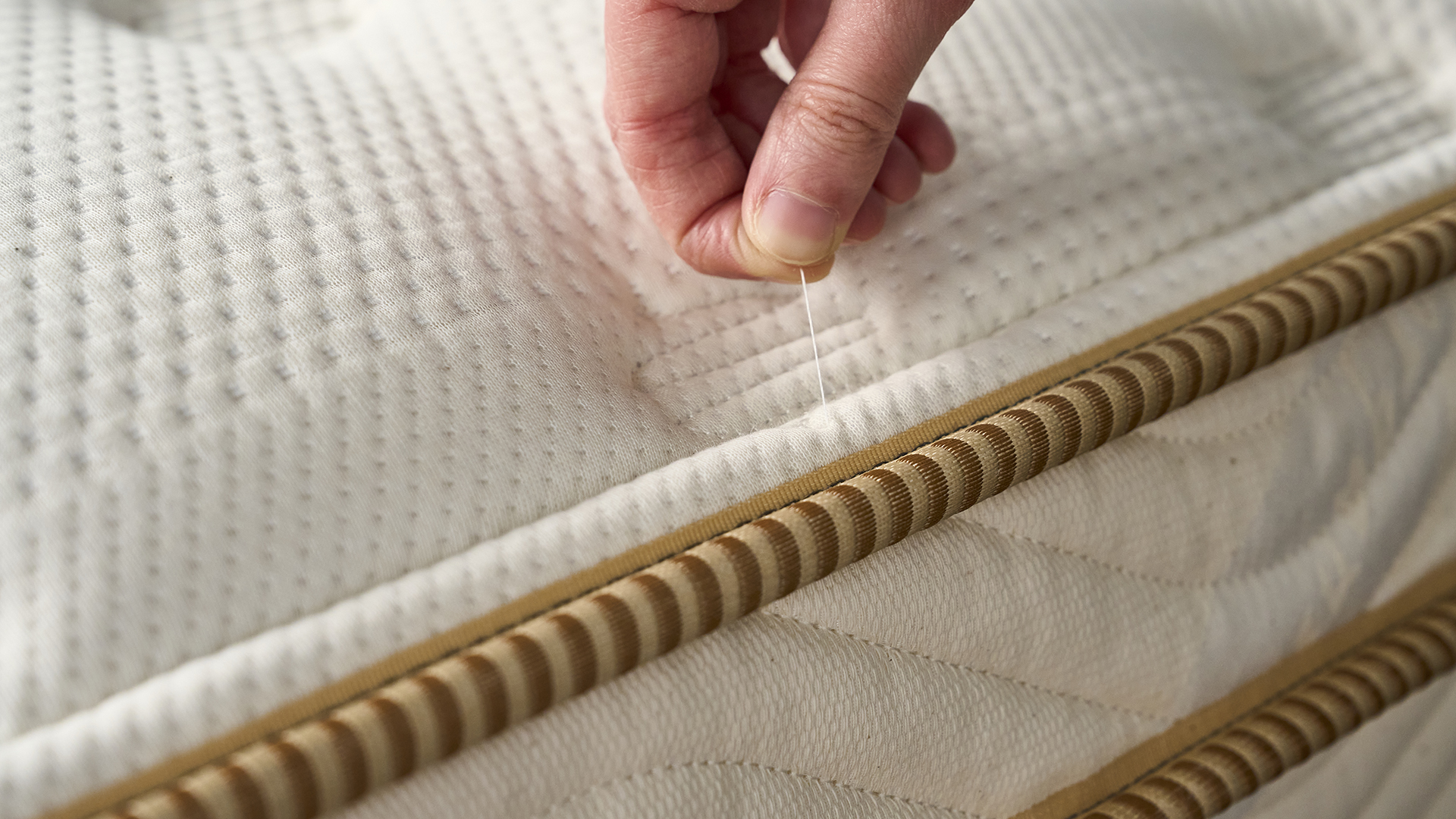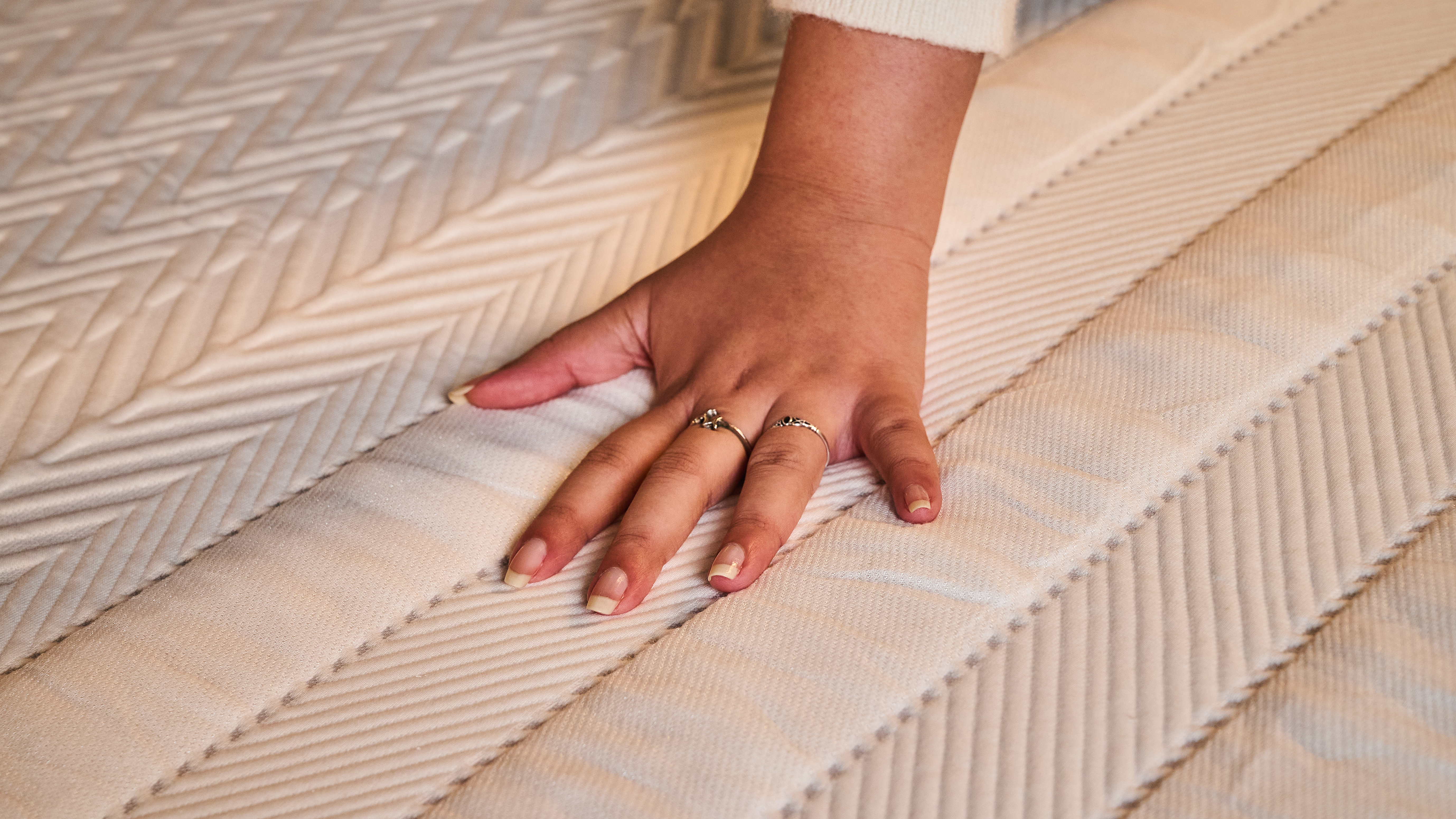The 7 tricks mattress brands use to get you to buy — and what to look for instead
These are the mattress buzzwords that have me rolling my eyes

If you're shopping online for a new bed, you've likely skimmed a lot of copy that makes every mattress sound like a dream.
And I can relate. I research every mattress I test, and that means I have to read a lot about trademark, innovative features that will revolutionize the way us mere mortals sleep.
Common materials are given space-age titles straight out of a sci-fi novel, and one-size-fits-all designs promise to solve everyone's sleep woes. However, when I take a closer look, I realize these features are wrapped up in confusing, hyperbolic buzzwords to disguise the fact that they're pretty standard.
That's why I've compiled a list of the top seven mattress buzzwords I'm sick of seeing, plus the features that you can actually find in the best mattresses instead. So, keep an eye out for these buzzwords when hunting the upcoming Labor Day mattress sales, and you'll snag a bed that lives up to its promises.
The 7 mattress buzzwords to ignore — and what to look for instead
1. "Breathable" covers
It's been boiling summer this year, and it's not over yet. Cities and towns all across the USA are still feeling the heat, and this means a lot of stuffy, restless nights.
Most mattresses today have at least some temperature-regulating features, and the word brands often use to describe their mattress covers is "breathable". According to brands, these "breathable" covers guarantee a cool night's sleep.

Don't get me wrong, breathable materials like organic cotton or wool are great, but they are not the same as cooling materials.
Get instant access to breaking news, the hottest reviews, great deals and helpful tips.
In fact, the majority of mattress covers are made from breathable fabrics (I've never come across a mattress with a heat-trapping nylon cover, for instance) so a breathable cover really isn't anything special.
While a breathable cover will of course boost airflow and won't trap body heat, it will not dissipate body heat either, nor will it cool you down.
What to look for instead: A breathable cover alone will not keep hot sleepers cool, so instead look at the specialist cooling covers found in this year's best cooling mattresses instead. For instance, testers for the Brooklyn Bedding CopperFlex Pro Hybrid Mattress review and the Brooklyn Bedding Aurora Luxe mattress review loved the cooling GlacioTex covers, while the Cocoon by Sealy Chill mattress review praised the PCM cover of the budget cooling bed.
2. "Open-cell" foam
Body-cradling memory foam has been a staple of the mattress industry since the 90s, but it has a major flaw: it can trap heat.
However, many brands try to reassure customers that their proprietary foam is different by describing it as "open-cell". "Open-cell" foam, they say, allows increased ventilation to dissipate heat and keep you cool at night.
Sounds good, right? Well, it turns out that all of today's mattress foams are open cell, so it's really nothing special and won't provide specialist cooling. In fact, you'll only find closed-cell foam in packing materials, wall insulation and yoga mats.
What to look for instead: The best memory foam mattresses on the market have the good sense to use cooling materials that offset the foam's propensity to trap heat. For instance, a Cool Touch Cloud Cover knit with cooling yarns and a heat-resistant climate fiber layer kept testers sleeping cool on the all-foam Puffy Cloud during the Puffy Cloud Mattress review.
3. "Forever" warranty
Beds often come with mattress warranties which cover problems such as sagging and broken materials, but I'm seeing a rise in "forever" warranties (also called "lifetime" warranties).
Lifetime mattress warranties may seem like generous extras, but they're also pretty unnecessary ones. Mattress should be replaced every seven to 10 years (up to 25 years in the case of latex mattresses) and the likelihood that you'll keep the same mattress for the rest of your life is pretty slim. Bottom line: there is no such thing as a mattress for life, and a lifetime warranty shouldn't give a bed an edge when choosing between two mattresses.

What to look for instead: If you see a mattress that's perfect for you and just so happens to have a lifetime warranty, then go for it — all I'm saying is that it shouldn't be a deciding factor. All you need to look for is a warranty that lasts for at least 10 years, with decade-long warranties coming with the best cheap mattresses on the market.
4. "365-night" trial
Along with warranties, a sleep trial is another benefit to look for in a mattress. Trials allow you test your new mattress at home during the return window, so you can either keep or return once you've slept on it for long enough.
But how long is long enough? Well, some brands, such as Saatva and Nectar, seem to think a trial should last an entire year.

While a 365-night trial is generous, it's pretty superfluous (just like a lifetime warranty) and shouldn't influence your shopping too much. You really don't need a whole year to decide if a mattress is for you, so a 365-night trial should only be seen as a nice little bonus.
What to look for instead: It takes about four weeks to know whether a mattress is right for you, but trials start from your delivery date. This means your trial starts before you get a chance to set up your mattress, so with this in mind (plus other interruptions such as going on vacation during the trial period) I think a trial that lasts at least 90-100 nights should be enough.
5. "Ends today!"
There's never a time where there are no mattress sales going on, but some brands want to make you think there'll never be another discount if you don't buy right now. Some even have a countdown banner at the top of their website urging you to make a decision before it's too late.
The truth is that many brands — such as DreamCloud, Cocoon by Sealy, Nectar, and Siena — have evergreen sales that stay the same throughout the year, even during major sales events like Black Friday. The countdowns and the "Ends today!" warnings are just marketing tools to make you think you're getting a better deal than it actually is.

What to look for instead: There are plenty of brands that roll out genuinely good deals during the biggest mattress sales of the year and even surprise us with flash discounts. To make sure you're getting a good deal, check out our deals hubs (most notably our Saatva mattress deals and Helix mattress deals hubs) for great price tracking. Also, look up how often a mattress is discounted by using price-tracking tools such as price-snapshotting Wayback Machine or Amazon price tracker Camel, Camel, Camel.
6. "More cooling than X model!"
You'll find so many mattress brands bragging that their latest mattress sleeps much cooler than its predecessor, but that's a pretty meaningless statement when you've never tried the original model. If you have indeed tried the older version then this new-and-improved slogan may hold some weight, but it's just a glib promise to everyone else.

What to look for instead: Look for concrete data that tells you exactly how cooling a mattress is. For example, the Eight Sleep Pod can cool your bed down to as low as 55 degrees Fahrenheit (and many other smart beds are capable of such cooling). If you're not into the idea of a smart mattress, the Tempur-Pedic Tempur-Breeze mattress collection also promises a sleep that's five to 10 degrees cooler.
7. For "all" sleepers

There is no such thing as a "mattress for all", even if the best medium-firm mattresses come close, so approach one-size-fits-all beds with a dose of scepticism. While a medium-firm bed is designed to suit as many sleep positions as possible, other things besides sleep position needs to be taken into account.
Body weight, sleep and health issues, whether you sleep alone or not, and even just personal preference needs to considered when mattress shopping, so the idea of a "mattress for all" is pretty far-fetched.
What to look for instead: Do your research by reading our guides on how to choose a mattress , how firm your mattress should be, how thick your mattress should be, and how to choose a mattress for your sleep position.

Frances Daniels is a PPA-accredited journalist and Sleep Staff Writer at Tom's Guide with an MA in Magazine Journalism from Cardiff University. Her role includes covering mattress and sleep news and writing sleep product reviews and buyer's guides, including our Best Hybrid Mattress 2025 guide. She is interested in the relationship between sleep and health, interviewing an array of experts to create in-depth articles about topics such as nutrition, sleep disorders, sleep hygiene, and mattress care. She is also our specialist on mattress toppers — producing bed topper reviews and taking care of our Best Mattress Toppers 2025 guide — and leads content relating to fiberglass-free beds for a non-toxic sleep. Outside of Tom's Guide, she has written for Ideal Home and Marie Claire.
You must confirm your public display name before commenting
Please logout and then login again, you will then be prompted to enter your display name.
